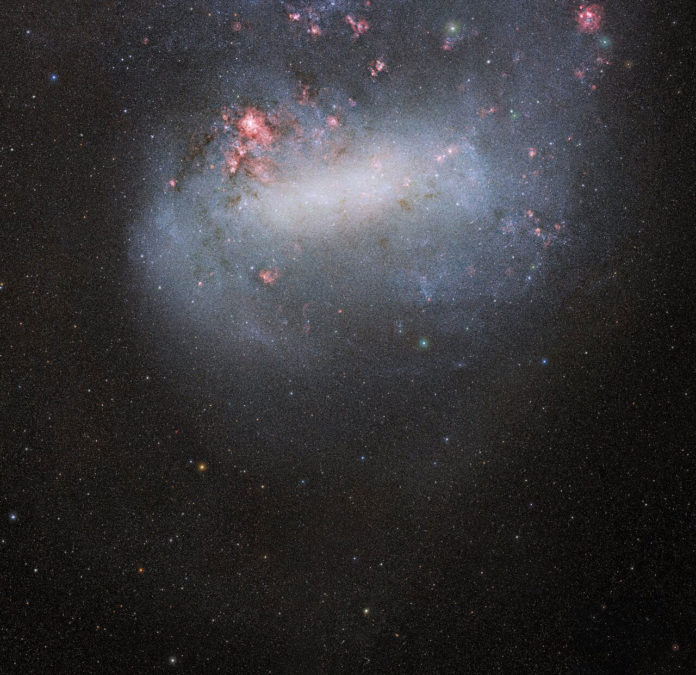Using the 520-megapixel high-performance Dark Energy Camera (DECam) on the Víctor M. Blanco 4-meter Telescope at the Cerro Tololo Inter-American Observatory (CTIO) in Chile, an international team of astronomers snapped images revealing a striking family portrait of our galactic neighbors—the Large and Small Magellanic Clouds. These images from the Survey of the MAgellanic Stellar History (SMASH) represent a portion of the second data release from the most in-depth, most extensive survey of the Magellanic Clouds.
These data are now available to astronomers worldwide through Astro Data Lab at NOIRLab’s Community Science and Data Center (CSDC). CTIO and CSDC are both Programs of NSF’s NOIRLab.
David Nidever, Assistant Professor in the Physics Department at Montana State University and Principal Investigator of the SMASH survey, said, “To date, this is the deepest and most extensive astronomical dataset of the Magellanic Clouds, which are the closest large galaxies to us. These satellite galaxies have been studied for decades, but SMASH is being used to map out their structure over their full, enormous extent and help solve the mystery of their formation.”
The complete SMASH survey, which includes the view shown in these images, covers an area 2,400 times greater than the full Moon and required about 50 nights of specialized observations.
Even though dwarf galaxies like Magellanic Clouds populate the Universe, the vast majority are too faint and distant for astronomers to study. Having the Large and Small Magellanic Clouds as neighbors offer astronomers a chance to explore small galaxies’ formation and evolution.
The SMASH team uses its in-depth dataset to study star formation history across both of these galaxies. They have uncovered evidence that the pair of galaxies have collided with each other in the recent past and that this sparked the recent episode of intense star formation.
National Science Foundation program officer Glen Langston said, “These are beautiful multicolor images of the Milky Way‘s nearest neighboring galaxies. Through the care the dedicated team has taken, they give us a remarkable view of the thirteen billion year history of star formation in these galaxies.”
Knut Olsen, NOIRLab scientist, and survey co-leader explains, “These latest SMASH data of the central regions of the Magellanic Clouds, where most of the stars are found, are unique in their combined depth, breadth, and uniformity. Besides producing amazing images, these data allow us to look into the past and reconstruct how the Magellanic Clouds formed their stars over time; with these ‘movies’ of star formation, we can try to understand how and why these galaxies evolved.”
Adam Bolton, Director of CSDC, explains, “As a modern astronomy research lab, NOIRLab provides both the observing platform for teams of scientists to conduct ambitious surveys like SMASH, and the data-science platform for the entire astronomical community to exploit the resulting data products for discoveries.”
David Nidever said, “We’re just getting started. Data from the SMASH survey have the potential to revolutionize our understanding of the stars making up the Magellanic Clouds.”
Journal Reference:
- The Second Data Release of the Survey of the Magellanic Stellar History (SMASH). arxiv.org/abs/2011.13943
